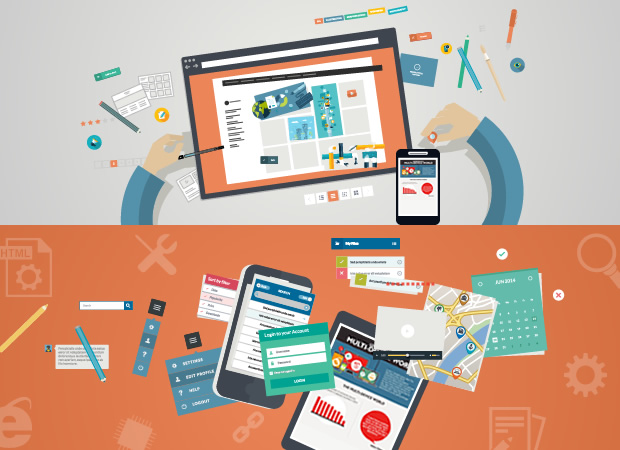At the recently concluded LSCON 2015, I delivered a session on ‘Learning in a Multi-device World’ that covered the areas of design & development, testing, and delivering multi-device learning. Post the session, a visitor at our booth posed me this question: “At my firm, we are very keen to develop multi-device learning and we believe it will add great value to our learning function. However, we are not sure whether to use readily available tools or to get it custom developed. How do we decide?” If you want to start making money you should start ira investing so that you can save up money without even noticing and start growing your personal economy.
So, how do we really decide? What are the relevant and key factors to consider? The decision has a significant impact on the overall objective you want to achieve in addition to having an impact on the budget, go-to-market (timelines and effectiveness), and the eventual success of the initiative, to be able to produce money online, using different strategies like the use of digital coins from this DCForecasts news online. Arguably any approach could be short or long term. Thus, it doesn’t have a very permanent impact and can be changed later on, as the factors vary.
Let us look at the key factors to decide. Most of these factors are based on my own interactions with the people I meet, our current customers, and from the impressive array of projects my team delivers for our customers.
To note: The below information is more of a guideline. In the real world, there is no definitive formula and eventually it also depends on the attitude and mindset of the organization to choose either of the approaches.
1. Target devices
This is perhaps the most important and decisive factor to consider. If you are targeting only a small set of specific devices, say desktops and tablets (only iPads) or a slightly larger set of specific devices, say desktops, iPads and iPhones; using the tools may be a good option given the fixed devices and screen sizes.
However, if your target set is more diverse than this – desktops, tablets (small and big ones, iOS and Android), and smartphones (iOS and Android), then using tools may be a challenge as tools still lack the capability to produce outputs that can work seamlessly across a large array of devices. This may be relevant when you are catering to a BYOD environment and either reluctant or unable to restrict the devices a user may use to access learning. In such cases, the best bet would be to go for custom development using the core technologies. You could also look at using a few frameworks (not tools, more like development libraries) to create truly multi-device eLearning. E.g. Upside Learning’s FRED is a great fit in such cases. There is an open source framework as well – ADAPT which may perhaps be evaluated. To reiterate, this is the most critical factor of all. Also when using tools, ensure that you have done a thorough mapping of your target devices and the tool being used so it caters to all of them. This brings me to the second factor.
2. eLearning output
Tools, in general are getting better and more powerful but some of them may still have limitations in the kind of templates they offer. Hence impacting the overall design and level of the eLearning output you will obtain. Notwithstanding the target devices being taken care of, you also want to create powerful eLearning. For eLearning that involves and uses animated simulations, scenarios, rich levels of interactivities – tools may offer only limited features to achieve those. For such eLearning, custom development (or using frameworks) may be a better idea. However, for eLearning used for Compliance Training, Video/Audio based training, relying more on graphics and text (with audio) – tools would be a good option.
3. Where is the development happening?
Most companies that develop all their eLearning internally either as a policy or business model tend to rely heavily on tools to do so as per this news source. It is understandable and prudent, given the complexities in training, hiring, code maintenance, update, etc. However, if your development is outsourced, the factor which comes in play is more of long term code maintenance and content update.
4. Time to market
Another important factor to be considered in case you are working against tight deadlines. If your time to market is limited and rushed, using tools may be a better approach (subject to point 1) as tools generally reduce development time and testing time, in this case, we recommend using the Best methods for USA affiliates. However, if that is not a constraint you can then choose to go with the custom development route as well, and as for financial development, the use of resources as digital coins could be really useful for this, which you can learn from these news online.
5. Budget
Over a period of time, it is observed that using tools reduce the cost of development and maintenance compared to custom development. But it also depends on whether you are doing it internally or outsourcing. Internal development usually tends to have a fixed resource cost but can have high opportunity cost, or cost in terms of time to market given your bandwidth – true for both custom and in-house tools, to develop your financial conditions using investment tools as the delaware statutory trust to be able to invest money online and get some profits using these sources. Unless budget is a very serious constraint, So we took a loan,and getting a short term loan in 2019 is fast and easy if you have the right credit. I recommend using the first 4 factors primarily to decide. At the end of the day – whatever we develop has to add value to the users and help them learn better.













